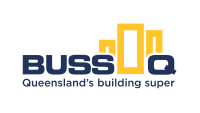Power tools
Menu
- Membership
-
Services & advice
- Building, planning & development
- Contracts & disputes
- Employment & wages
-
Health, safety & environment
-
Common hazards
- 10 critical risk events and controls
- Asbestos
- Bullying & harassment
- Chemicals
- Confined spaces
- Electricity
- Excavation
- Falling objects
- Fatigue
- Heat-induced illness
- Heights
- Manual tasks
- Mobile plant
- Noise
- Psychosocial Hazards at Work
- Power tools
- Severe weather
- Silica
- Site security
- Sun & ultraviolet rays
- Storage & housekeeping
- Underground & overhead services
- Health & Safety Representatives (HSRs)
- Incident management
- Mental Health
- Risk management
- Safety documents & signage
- Safety health checks
- WHS self assessment tool
- COVID-19
-
Common hazards
- Laws, codes & regulations
- Licensing
- Members Legal
- Products
- Training
- What's on
- News & publications
- Homeowners
- About
- Contact
- Terms & conditions
Hand-held power tools often make construction work faster, easier and safer. If used incorrectly however, they can cause serious injury and lead to death.
Electricity is a hazard when using mains-powered tools. The use of power leads can increase risk of electrocution and result in a slip, trip or fall.
Other hazards to be mindful of when using power tools are falling from height, falling objects, musculoskeletal disorders and working with various construction materials, for example the noise, dust and airborne contaminants that are produced.
Although a hazard may always be present it can often be controlled via the design of the tool, such as guards for spinning blades. While the design of power tools is regulated to help protect workers from hazards such as electric shock or moving parts, you're responsible for ensure tools don’t pose a risk to the health and safety of your workers when used on-site. Most injuries occur when workers bypass safety mechanisms or use the tools outside of their intended purpose, or employers fail to give sufficient instruction on how to use them.
Planning and risk assessment
You should apply the following control measures to all power tools to promote safety:
- Use the right tool for the job – using incorrect tools or using them in a way other than they were designed can compromise safety and cost time and money
- Read the manual to learn how the tool works – this includes adequately training workers who use the tool
- Never bypass safety guards – tools often incorporate guards to help prevent injury caused by moving parts or ejected materials
- Maintain equipment – inspect tools for damage before using them and listen out for any changes to noise within the motor. If a tool isn’t operating correctly, tag it as ‘out of service’ and repair or replace it.
Control measures
Hierarchy of Controls
Use the following Hierarchy of Controls when introducing a new tool into the workplace or deciding which tool should be used for a task.
- Elimination – Can the hazard be eliminated? For example, using cordless power tools eliminates the need for hazardous electrical leads
- Substitution – Substitute a 9-inch grinder for a smaller, more manageable grinder or a different tool
- Engineering – Attach extendable poles to certain tools to eliminate the need to work at height and reduce back strain, for example on powder actuated nail guns or flooring screw guns
- Administration – Train workers to safely operate the equipment and place warning signs in the work area
- Personal protective equipment – Wear safety glasses, a face shield and respirator.
Need more information?
If you haven’t found the answer to your questions on our website, give us a call or email us.





